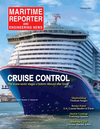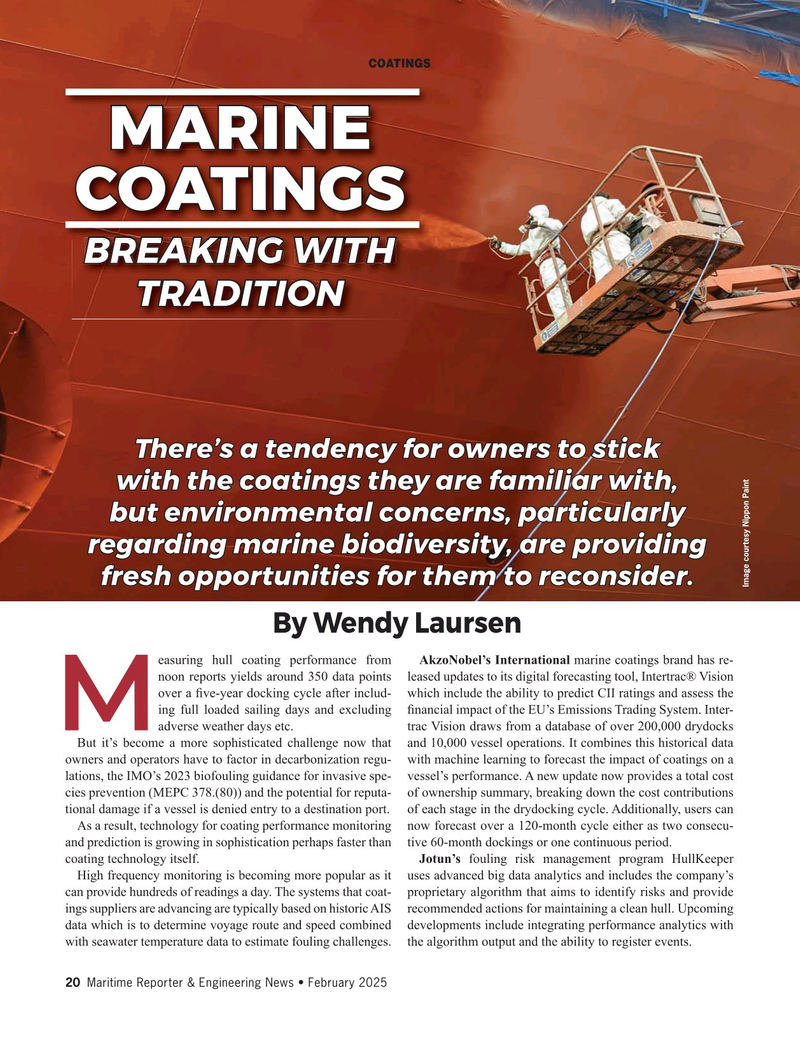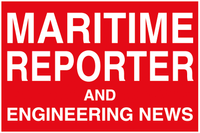
Page 20: of Maritime Reporter Magazine (February 2025)
Read this page in Pdf, Flash or Html5 edition of February 2025 Maritime Reporter Magazine
COATINGS
MARINE
COATINGS
BREAKING WITH
TRADITION
There’s a tendency for owners to stick with the coatings they are familiar with, but environmental concerns, particularly regarding marine biodiversity, are providing fresh opportunities for them to reconsider.
Image courtesy Nippon Paint
By Wendy Laursen easuring hull coating performance from AkzoNobel’s International marine coatings brand has re- noon reports yields around 350 data points leased updates to its digital forecasting tool, Intertrac® Vision over a ? ve-year docking cycle after includ- which include the ability to predict CII ratings and assess the ing full loaded sailing days and excluding ? nancial impact of the EU’s Emissions Trading System. Inter-
Madverse weather days etc. trac Vision draws from a database of over 200,000 drydocks
But it’s become a more sophisticated challenge now that and 10,000 vessel operations. It combines this historical data owners and operators have to factor in decarbonization regu- with machine learning to forecast the impact of coatings on a lations, the IMO’s 2023 biofouling guidance for invasive spe- vessel’s performance. A new update now provides a total cost cies prevention (MEPC 378.(80)) and the potential for reputa- of ownership summary, breaking down the cost contributions tional damage if a vessel is denied entry to a destination port. of each stage in the drydocking cycle. Additionally, users can
As a result, technology for coating performance monitoring now forecast over a 120-month cycle either as two consecu- and prediction is growing in sophistication perhaps faster than tive 60-month dockings or one continuous period.
coating technology itself. Jotun’s fouling risk management program HullKeeper
High frequency monitoring is becoming more popular as it uses advanced big data analytics and includes the company’s can provide hundreds of readings a day. The systems that coat- proprietary algorithm that aims to identify risks and provide ings suppliers are advancing are typically based on historic AIS recommended actions for maintaining a clean hull. Upcoming data which is to determine voyage route and speed combined developments include integrating performance analytics with with seawater temperature data to estimate fouling challenges. the algorithm output and the ability to register events.
20 Maritime Reporter & Engineering News • February 2025
MR #2 (18-33).indd 20 1/31/2025 2:40:05 PM

 19
19

 21
21
